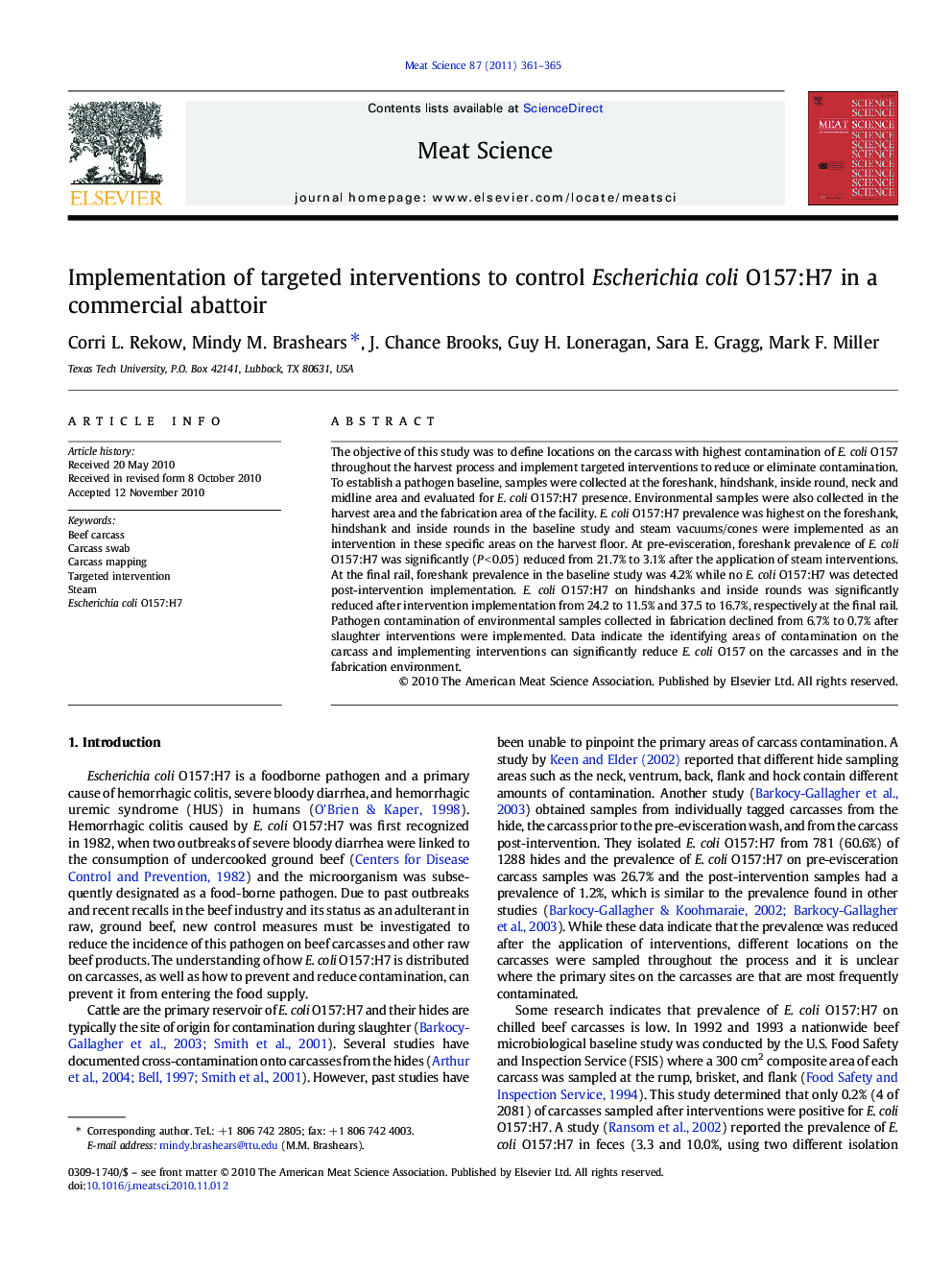| Article ID | Journal | Published Year | Pages | File Type |
|---|---|---|---|---|
| 2450734 | Meat Science | 2011 | 5 Pages |
The objective of this study was to define locations on the carcass with highest contamination of E. coli O157 throughout the harvest process and implement targeted interventions to reduce or eliminate contamination. To establish a pathogen baseline, samples were collected at the foreshank, hindshank, inside round, neck and midline area and evaluated for E. coli O157:H7 presence. Environmental samples were also collected in the harvest area and the fabrication area of the facility. E. coli O157:H7 prevalence was highest on the foreshank, hindshank and inside rounds in the baseline study and steam vacuums/cones were implemented as an intervention in these specific areas on the harvest floor. At pre-evisceration, foreshank prevalence of E. coli O157:H7 was significantly (P < 0.05) reduced from 21.7% to 3.1% after the application of steam interventions. At the final rail, foreshank prevalence in the baseline study was 4.2% while no E. coli O157:H7 was detected post-intervention implementation. E. coli O157:H7 on hindshanks and inside rounds was significantly reduced after intervention implementation from 24.2 to 11.5% and 37.5 to 16.7%, respectively at the final rail. Pathogen contamination of environmental samples collected in fabrication declined from 6.7% to 0.7% after slaughter interventions were implemented. Data indicate the identifying areas of contamination on the carcass and implementing interventions can significantly reduce E. coli O157 on the carcasses and in the fabrication environment.
